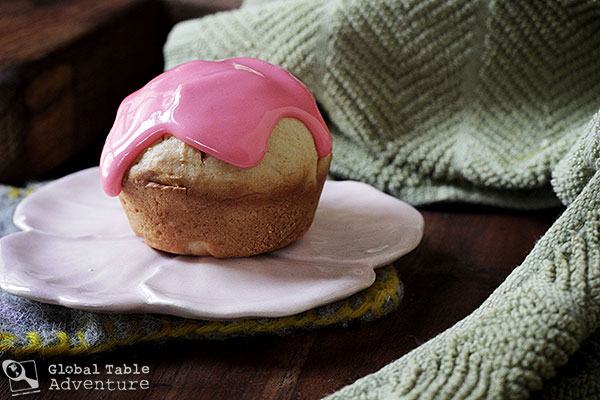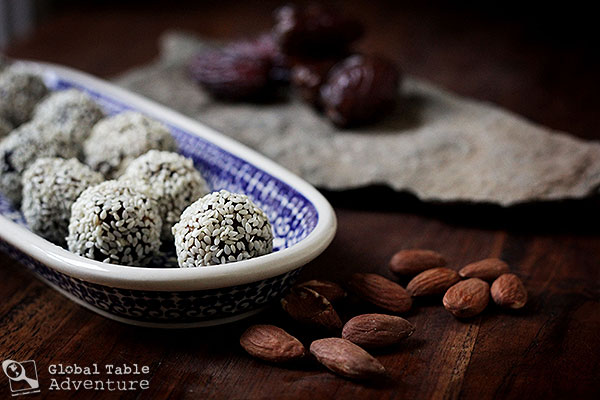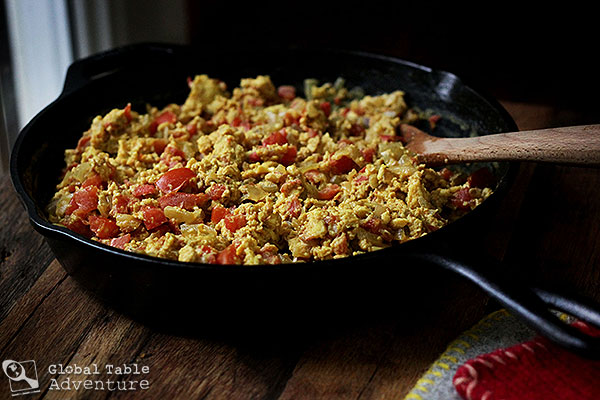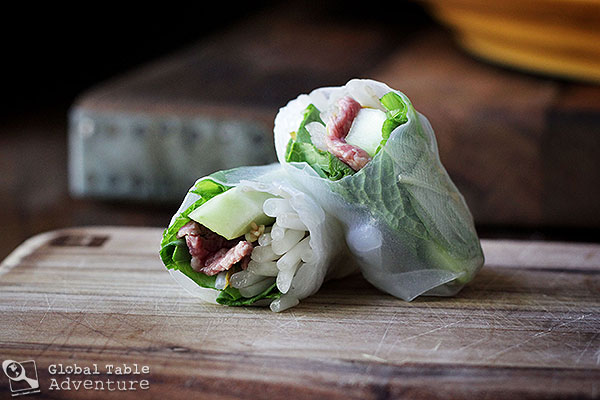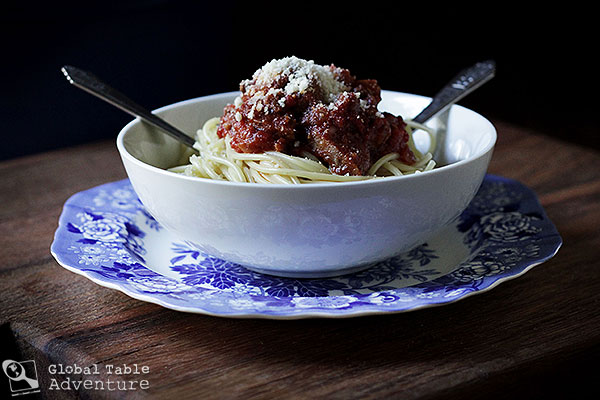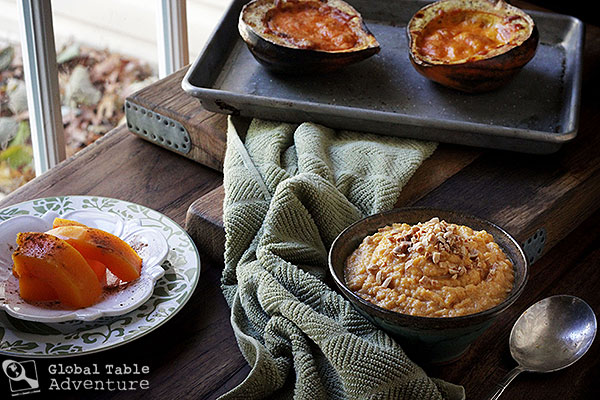
Everywhere I go, I see the rust, orange, and gold of pumpkins and squashes. Some smile from my neighbors’ front stoops. Some have been tagged for this year’s Thanksgiving pie or pumpkin pancakes (Hello, Russia!). Even Pinterest looks like a digital pumpkin patch of late. All this for good reason. These beautiful gourds are autumn. They represent breathless hikes to pick out the biggest, the gnarliest, the cutest in the bunch. But for all that, I can only look at so many pumpkin recipes before my eyes glaze over. Until Zimbabwe. In this southern African country, gourds are served up in fun and fresh ways. In my wildest dreams I never considered putting peanut butter with butternut squash. But my goodness… it works! Here are three recipes from Zimbabwe to add interest to your global fall fest. 1. Roasted Acorn Squash with Cheddar & Corn Oh man, oh man, oh man. Seriously. I’d be proud to call this lunch any time of day. This recipe was originally made with a “gem” squash in Zimbabwe, which I can’t obtain in Oklahoma. …
Read More
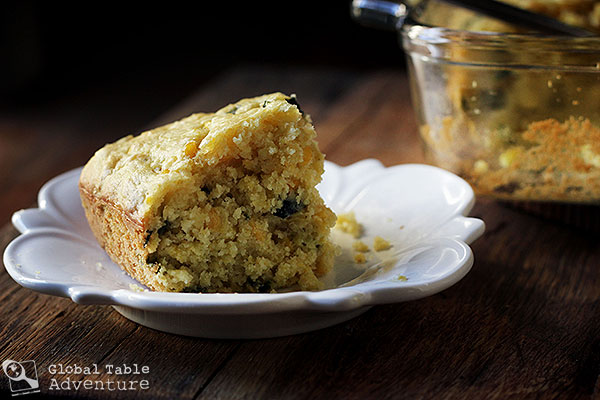
If you ask my husband, there’s always room for cornbread. And he’ll eat twice as much cornbread if green chilies dot through the crumb. But what would he think if the cornbread came from half a world away? If it came from Zambia? As a former “Mr Picky” he says: Mealie Bread is a good way to bridge the gap for picky eaters to try something from another culture. The cornbread in Zambia is much like the cornbread in the USA – except it is made with fresh corn kernels instead of cornmeal. This makes the flavor come alive. Zambians call it mealie bread (mealie is just another name for corn; mealie bread is popular all over southern Africa). The result is moist (bordering on juicy), naturally sweet, and great on the side of any autumn stew (such as Zambia’s Spiced Tilapian Stew). If you’re lucky enough to slice into the mealie bread while it’s still hot? Well… forget about having leftovers. So why stud the mealie bread with chilies? Because Zambians love chili peppers. Chilies are available in the …
Read More
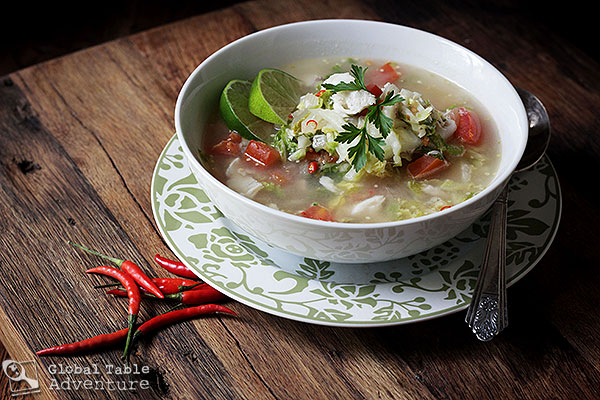
“Leading a race does not mean that you will win it.” Zambian Proverb It’s a chilly, wintery, blustery sort of day. Even the trees shudder, their leaves falling down in chatterings. Thankfully, Zambia makes quick work of dissipating the cold, with this Spiced Tilapia Stew. Each bite pops with fresh lime juice, tomatoes, and Napa cabbage. A dusting of cumin, mustard seeds, fresh ginger and garlic give the broth depth. But it’s the Thai Bird chilies that’ll clear your sinuses. Even just one in the pot promises a mellow tingle in every spoonful. This is another kind of DIY soup, because of the garnishes. Children will especially enjoy squeezing lime juice on their soup and sprinkling their bowl with parsley. Adults will enjoy seeing how many Thai Bird chili peppers they can handle. My husband added an entire sliced chili to his bowl; though he was sniffling and coughing from the heat, he then proceeded to add more. A note on the Tilapia: traditional Zambian stews often use dried tilapia. We’ve used fresh because …
Read More
When I made the amazing Pistachio Date Balls for Iraq, I thought I’d seen the easiest recipe in the world. It only uses two ingredients (third if you feel like getting extra fancy), and there’s no cooking. Well, today’s date balls are even easier: they don’t require a food processor. Boom! Even as simple as they are, the flavor is amazing – as though from a much more complex recipe. There’s a sweetness from the dates that transports me straight to Yemen… I mean, forget it. Let’s just lay under some Yemeni trees for a while, before we get around to making this recipe. Okay? Now, maybe this sunny afternoon in Yemen has you wondering: why include almonds and sesame seeds? Why not just eat straight dates? Well, you know how good peanut butter is with jelly? The balance of the nuttiness with the fruity date in this dessert is similarly satisfying. And addicting. Before I knew, I ate three of these. And to think. When I started this adventure, I (thought) I hated dates. …
Read More
Eggs. In the shell, they seems so… ordinary. But glowing, too, like they’re full of potential. Like they’re ready to become something more. When it comes to breakfast, Yemen knows how to dress them up – as Shakshouka. Shakshouka is a beloved skillet egg dish popular all over North Africa and the Middle East. We’ve made shakshouka before – the kind that is rather like a tomato sauce with poached eggs inside (and, by the way, yum!) – but Yemen makes shakshouka differently. For starters, they include spices like cumin, turmeric, cardamom, and clove. They also add hot green chili peppers for kick. Anything from an anaheim to a jalepeno would work well for this recipe. I’m a half hot pepper kind of gal. Keith’s more of a whole hot pepper. If you’re a no pepper person, that works too – though a touch of heat does add a layer of authenticity to the dish. But the biggest difference of all with Yemeni shakshouka is that, in Yemen, the eggs are scrambled, not poached. The result is …
Read More
Nước mắm pha is the quintessential Vietnamese dipping sauce, used on spring rolls, rice noodles, salads, and more. It’s sweet, salty, and heavily spiced. A basic recipe includes freshly squeeze lime juice, fish sauce, sugar, and water. The real flavor comes from garlic and fresh red chilies. I learned on Food Safari (a great food/travel show – catch it if you can!) that if the cook can get the garlic and chili pieces to float in the nước mắm pha, they will get married. Now, for those of you naysayers: there’s no reason to tell anyone about the fish sauce. I promise. Many unwitting folk enjoy this dipping sauce without being aware there is fish sauce inside. That’s because it lends a salty flavor to the dip, not an inordinately pungent one. There is one exception: if you make it with “first press,” “extra virgin” fish sauce, as I did this week. The flavor, much like olive oil of the same name, is quite a bit bolder in flavor. Even my own Mr Picky, who has tastebuds of …
Read More
Today, let me show you how Vietnamese food is like a dream. Delicate. Lingering. But, also, let me show you how their food is like a celebration. Bold. Unapologetic. Before I do, call your friends and family because today’s recipe is a Vietnamese food party. The star? The DIY Fresh Spring Roll. Here’s how it works: Every guest gets to pick and choose their fillings, from cucumber and sprouts, to vibrant mint, thai basil, and cilantro. The best part? Everyone gets to cook their meat at the table in a vinegar and lemongrass broth. You can do this in a crock pot, a fondue pot, or, if you don’t have any of these, simply cook the beef in the kitchen right before dinner. Think of Bò nhúng dấm as Vietnamese fondu… also known as hot pot. Some like to cook shrimp, others beef or pork. I’ve even heard of people cooking squid in the broth. The bets part about this recipe is that the ingredients can be prepped and gathered way ahead of your guests ringing …
Read More
Crack open just about any Venezuelan fridge and you just might find a pitcher of tizana. Tizana is as much a drink as it is a fruit salad. The fruity concoction keeps for nearly a week, which makes it perfect for impromptu scooping. Though perhaps not traditional, I’m guilty of digging into the pitcher at breakfast time, dessert time, and, of course, at midnight. I can see how having tizana in the fridge would be a great way to get my daily allotment of fruit, especially when in a hurry. So how is it made? For starters, you’ll need about… an entire orchard. Chopped. The kinds of fruit varies, but most recipes seemed to include one or more kinds of melon, pineapple, grapes, bananas, and apples. More exotic fruit like papaya, passion fruit, persimmons, guava, and mango appear once in a while, too. The whole mixture is thinned with good ol’ fashioned OJ and a splash of grenadine. Some people like to add club soda or regular soda to the mix, too. Seriously. If this doesn’t …
Read More
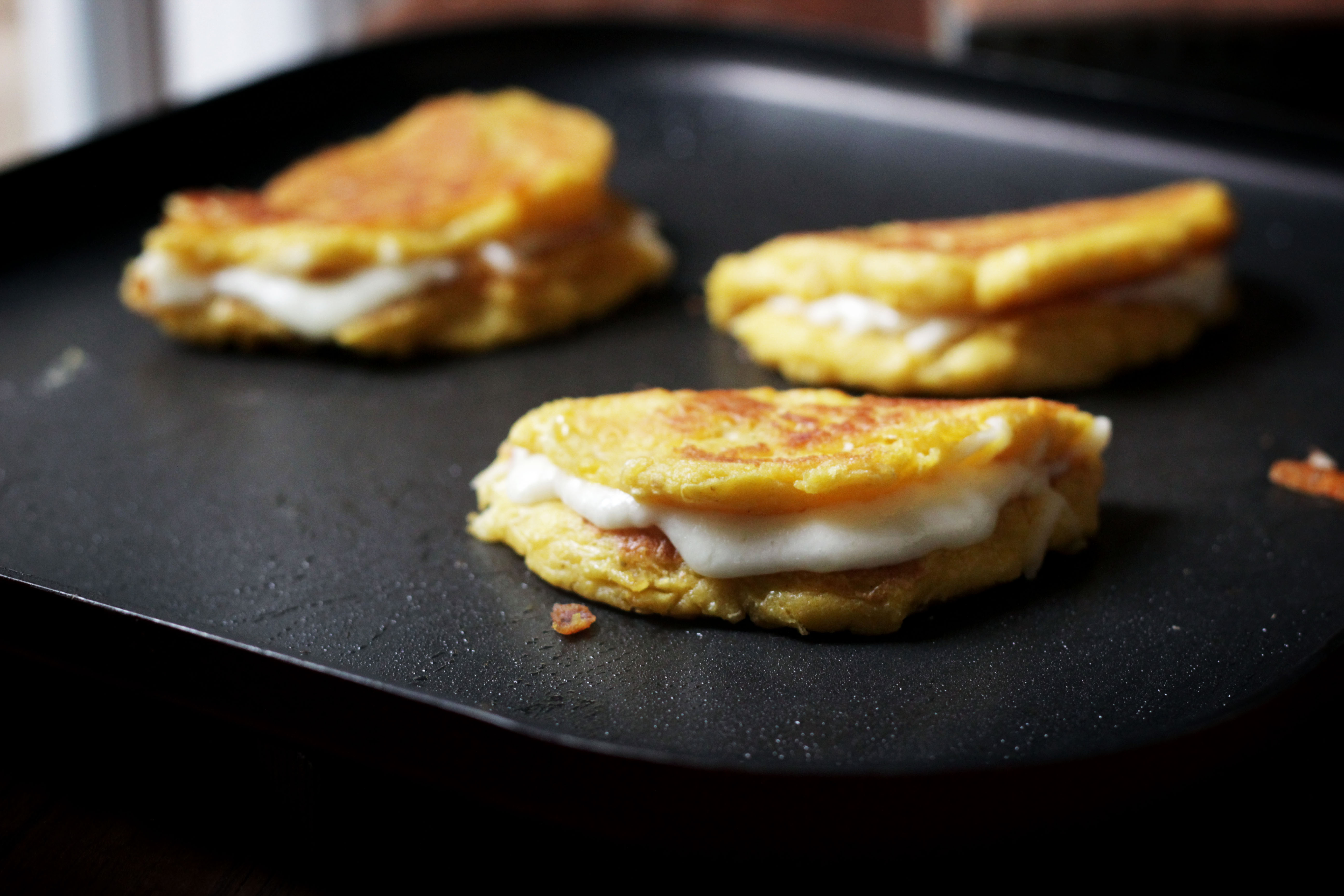
“There’s nothing hidden between heaven and earth.” Venezuelan Proverb Nothing hidden indeed… except, perhaps the cheese inside a steaming, hot Cachapas. Brittle autumn days require an extra slathering of comfort. Ooey gooey cheese-filled corncakes, a.k.a. cachapas fit the bill nicely. Think of them as the South American version of pancakes. The cakes are made with just two ingredients: corn and masa harina, plus the requisite sprinkling of salt and pepper. There’s a simplicity to the recipe that means a batch can be made as easily at midnight as in the afternoon. Which means you can stovetop travel to the beaches of Venezuela any time you like. While you can make cachapas with fresh corn in the fall, you can also use frozen corn any time of year. Corn gives the cachapas sweet overtones. Masa harina – a flour made from hominy, the big-kerneled cousin to corn – binds the mixture together so the corncake holds its shape (all the better for topping with ooey gooey cheese!). Speaking of cheese, the key to the cachapas is to sprinkle them …
Read More
When I ask my mother how I’m related to Cousin Alfred, the answer usually goes: “Well…” and then there’s a contemplative silence. I can see her running through all our different relations, high up on the family tree, doing mental gymnastics to connect one branch to another. Eventually, she comes out with “I think he’s my mothers, mother’s cousin’s”… and then, either she trails off, or my attention span wanes because, really, all that matters is that he is family, one way or another. Alfred lived until he was 104 years old. I think much of his long life was due to making homemade ravioli and meat sauce. He taught me when I was about Ava’s age, or maybe a little younger. We made his spinach & pork ravioli for Italy and, today, we continue to keep Alfred’s memory alive with this sauce. Mom made sure to write down his recipe for meat sauce. But the title “meat sauce” doesn’t do it justice. This is meat sauce, yes, but it’s also filled with a half dozen …
Read More
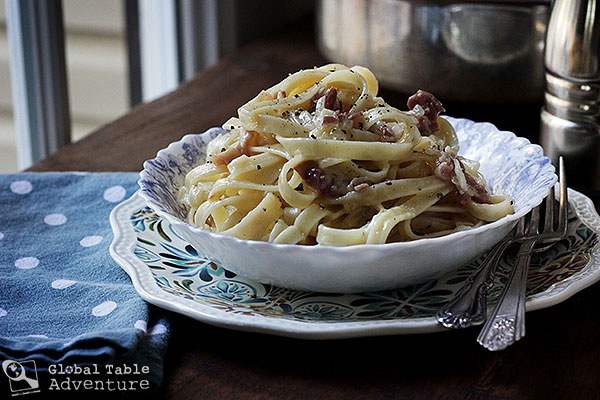
Before I knew about Papalina-style noodles, I thought Carbonara was the bees knees. But it turns out that Papalina is the richer version of carbonara. It uses cream, Parmesan, and prosciutto instead of the pancetta or guanciale (pig jowl) from in carbonara. One peppery bite in, and mac and cheese is a bland, happily forgotten memory. Let me be clear. My translation of the Italian is not entirely accurate. Papalina means skullcap, not pope. But I dubbed this recipe the Pope’s Fettuccine because it was literally created for Pope Pius XII in the late 1930’s. And guess what he wore? A skullcap. Anyway, there are many versions of how the recipe was invented. The most common, is that the pope wanted to enjoy a very typical Roman meal. The chef in charge decided that carbonara was very Roman… but he decided that he wanted to make a special version, just for the pope. So Papalina was born. Beautiful, peppery papalina. It makes for a fancy but easy dinner party meal. It truly is the grown-up mac and …
Read More

